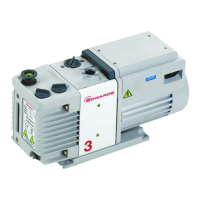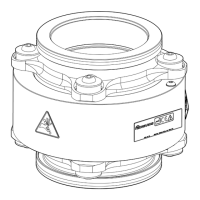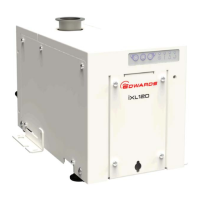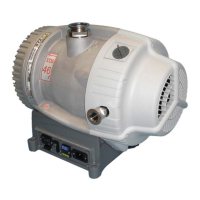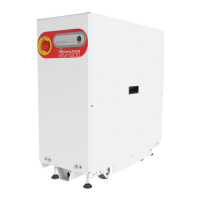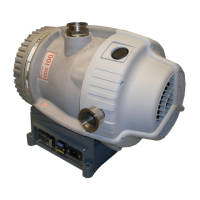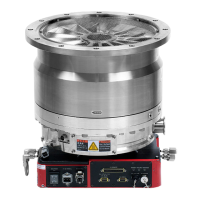M561-00-880 Issue C
Page 46 © Edwards Limited 2012. All rights reserved.
Edwards and the Edwards logo are trademarks of Edwards Limited.
Maintenance
Wait for at least four minutes after you have switched off the electrical supply before you touch any
electrical component on the dry pumping system.
Route and secure cables, hoses and pipelines during maintenance to avoid possible risk of trips or
entrapment.
Ensure that any oil or water collected in the secondary containment drip tray is removed before moving the
system.
The enclosure panels should only be removed with the use of a special tool, when the pump system has been
stopped and allowed to cool sufficiently (as an indication the system should be left for one hour with cooling
water still connected with flow characteristics as defined in Section 2).
Wear the appropriate safety-clothing when you come into contact with contaminated components. Dismantle
and clean contaminated components inside a fume-cupboard.
Re-check the pump rotation direction if the electrical supply has been disconnected.
O-ring replacement intervals vary depending on your application.
Dispose of components, grease and oil safely.
Take care to protect sealing-faces from damage.
Do not touch or inhale the thermal breakdown products of fluorinated materials which may be present if the
system has been overheated to 260 °C and above. These breakdown products are very dangerous.
Fluorinated materials in the system may include oils, greases and seals. The system may have overheated if
it was misused, if it malfunctioned or if it was in a fire. Edwards Material Safety Data Sheets for fluorinated
materials used in the pump are available on request.
The system requires little user maintenance. Pump protection sensors fitted to the system do not require routine
maintenance. The maintenance operations you can carry out are described in the following sections, any other
maintenance must be carried out by Edwards service centres (refer to Section 7). The frequency of maintenance
operations depends on your process. Adjust the frequency of maintenance operations according to your experience.
When you maintain the system, use replacement parts, seals and fittings supplied by Edwards, refer to Section 7.
Ensure that your nitrogen and cooling-water supplies are connected in parallel and that they meet the specifications
given in Section 2. Contact Edwards for more information.
5.2 Relocate the system for maintenance
The substances that accumulate in the exhaust-pipe, elbow and check-valve can be dangerous. Do
not allow these substances to come into contact with your skin or eyes. Do not inhale vapours from
these substances. Fit blanking caps to the inlet and outlet flanges when you move the exhaust
pipe, elbow or check-valve around your workplace.
The majority of synthetic oils/grease can cause inflammation of the skin (dermatitis). Safety
precautions must be taken to prevent prolonged skin contact with these substances. Use of
suitable protective gloves and clothing along with a respirator is recommended if contact with the
substance is anticipated. System process gases and residue can be highly toxic. Take all necessary
precautions when handling components that have, or could have, come into contact with them,
including O-rings, lubricants and all exhaust accessories.

